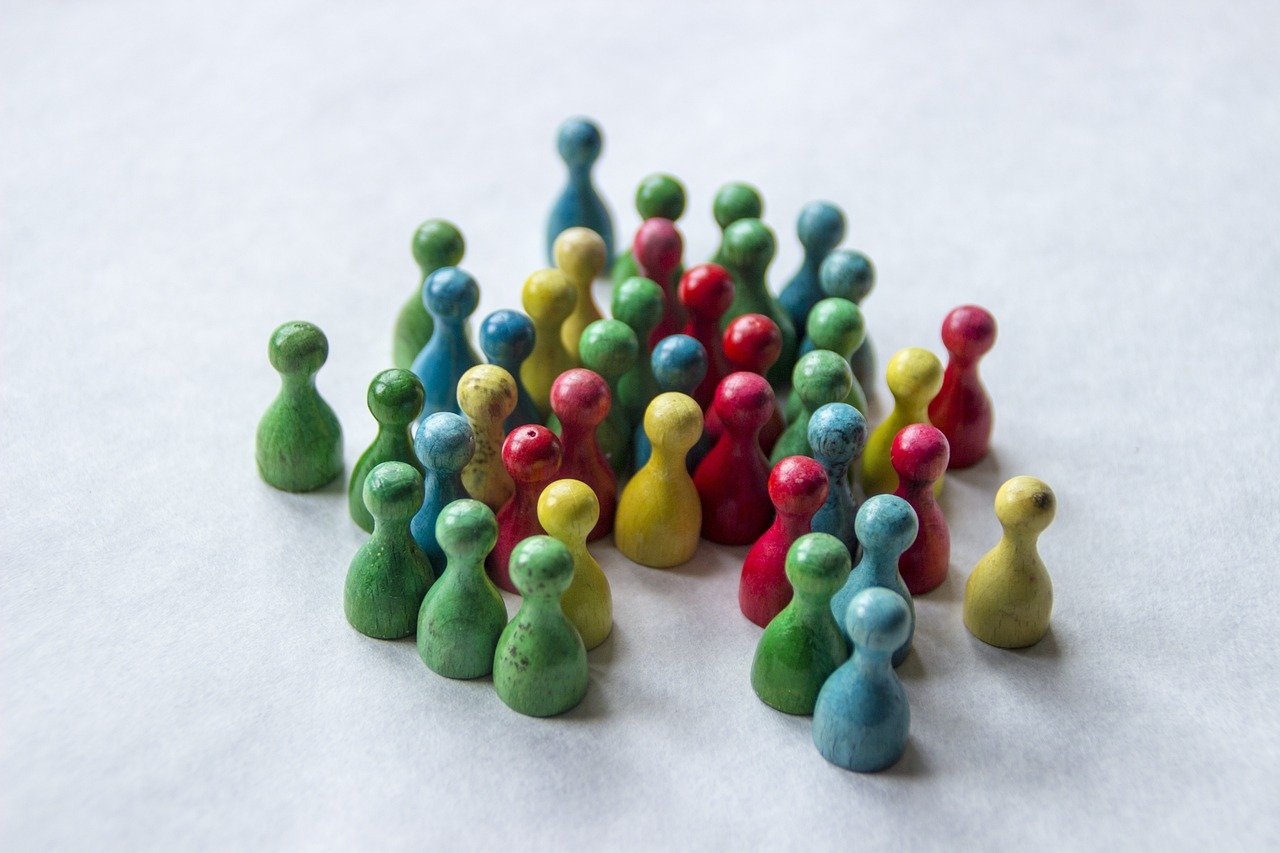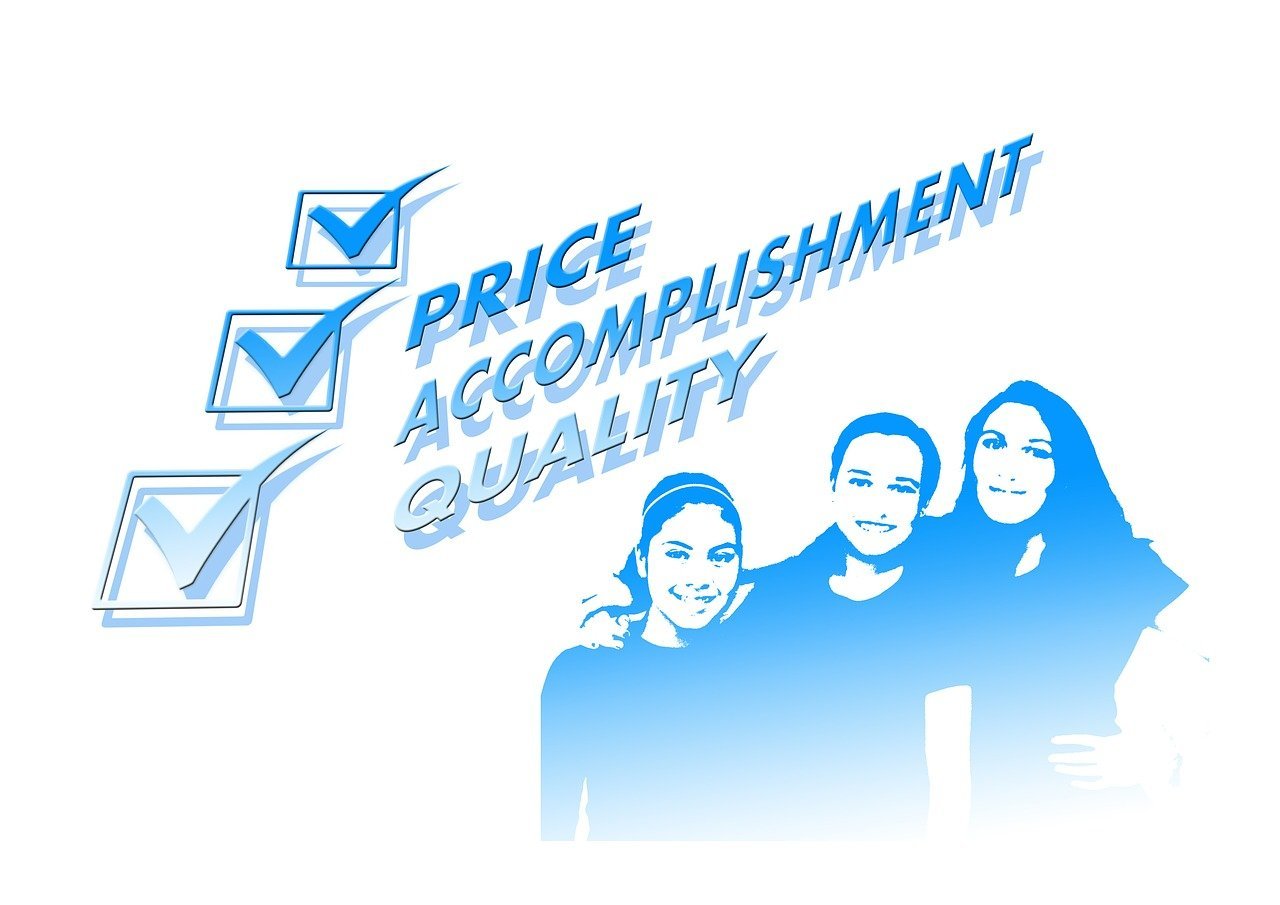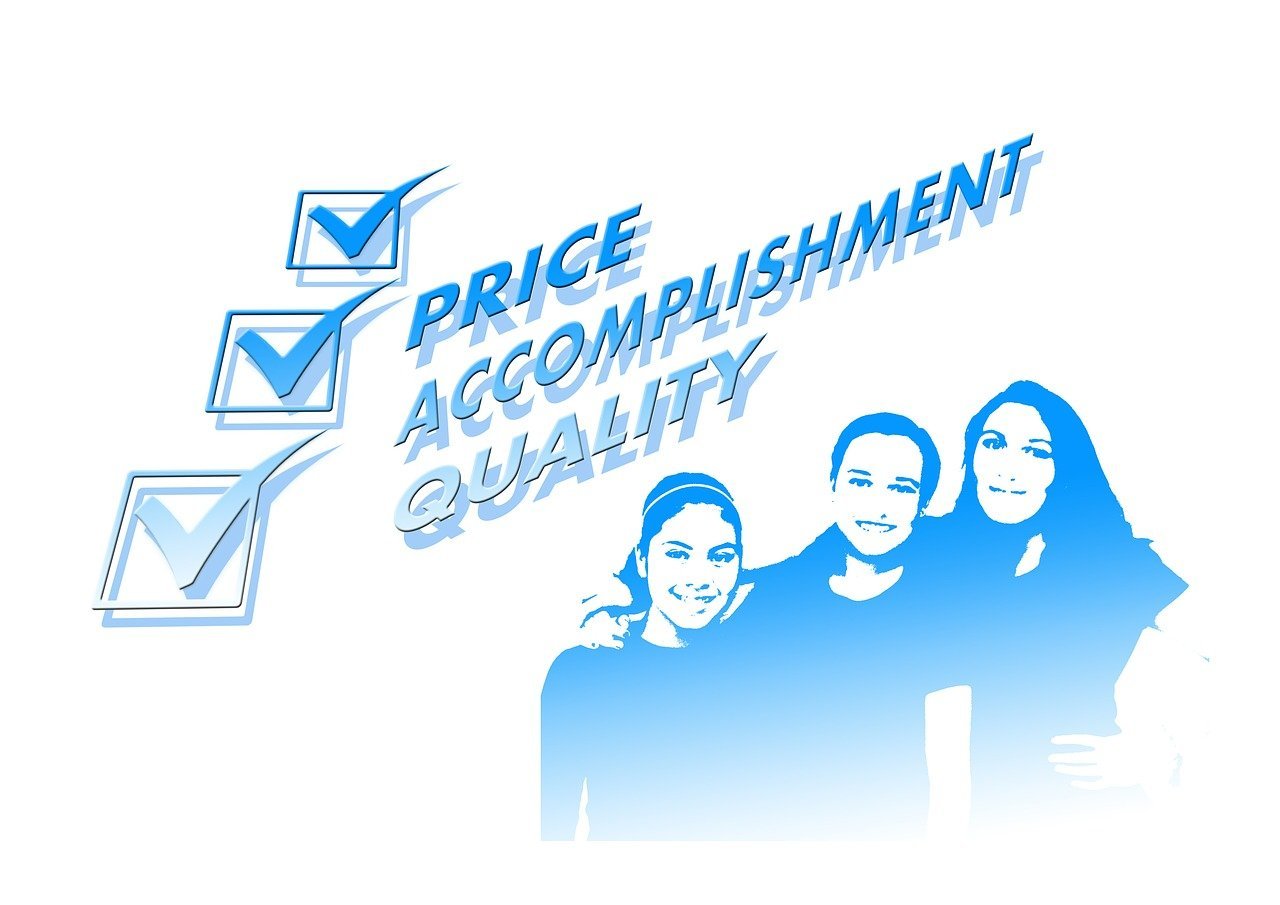In the world of work, effective communication is crucial for the success and productivity of a team. It enables members to share ideas, collaborate seamlessly, and build strong relationships. However, building effective communication in a team environment is no easy task. It requires open-mindedness, active listening, and a willingness to understand each other’s perspectives. This article will explore some practical tips and strategies to help you foster effective communication within your team, resulting in increased efficiency, harmony, and success.

- Establish clear goals and objectives
- Promote open and honest communication
- Foster a positive team culture
- Establish effective channels of communication
- Clarify roles and responsibilities
- Use clear and concise language
- Develop active listening skills
- Practice effective non-verbal communication
- Encourage regular feedback and check-ins
- Resolve conflicts and address misunderstandings
Establish clear goals and objectives
In order to build effective communication in a team environment, it is essential to establish clear goals and objectives. This provides the team with a clear direction on what needs to be accomplished and ensures that everyone is working towards a common purpose.
Define team goals
The first step in establishing clear goals and objectives is to define the team goals. These goals should be specific, measurable, achievable, relevant, and time-bound (SMART). By clearly defining what the team is trying to achieve, it becomes easier for team members to understand their role and contributions.
Set measurable objectives
Once the team goals are defined, it is important to set measurable objectives that contribute to the achievement of those goals. These objectives should be specific and quantifiable, allowing team members to track their progress and ensure they are on the right track. Measurable objectives provide a sense of direction and purpose, making it easier for individuals to align their efforts and work towards a common goal.
Communicate goals and objectives clearly to the team
To ensure that everyone is on the same page, it is crucial to communicate the goals and objectives clearly to the team. This can be done through team meetings, emails, or other communication channels that are accessible to all team members. Clear communication helps to eliminate confusion and ensures that everyone understands their responsibilities and the overall purpose of their work.
Promote open and honest communication
Open and honest communication is the foundation of effective team communication. It fosters transparency, trust, and collaboration among team members.
Encourage active listening
Active listening is a key component of open and honest communication. Encourage team members to listen attentively to one another, show genuine interest in what others have to say, and avoid interrupting or formulating responses before the speaker has finished. By actively listening, team members can better understand each other’s perspectives and contribute to productive discussions.
Create a safe and non-judgmental space
To promote open and honest communication, it is important to create a safe and non-judgmental space where team members feel comfortable expressing their thoughts, ideas, and concerns. This can be achieved by fostering a culture that values diverse opinions, encourages constructive dialogue, and treats everyone with respect. When team members feel safe to share their viewpoints, they are more likely to contribute to meaningful discussions and provide valuable input.
Use effective questioning techniques
Using effective questioning techniques can help facilitate open and honest communication within the team. Encourage team members to ask open-ended questions that promote discussion and exploration of ideas. By asking thought-provoking questions, team members can gain deeper insights, uncover different perspectives, and stimulate critical thinking. Effective questioning techniques can help uncover valuable information, encourage active participation, and foster a culture of open communication.
Promote feedback and constructive criticism
Feedback and constructive criticism are essential for continuous improvement and growth. Encourage team members to provide feedback to one another in a constructive and respectful manner. This can be done through regular feedback sessions, where team members have the opportunity to provide input on each other’s work, share suggestions for improvement, and recognize each other’s achievements. By promoting feedback and constructive criticism, team members can learn from each other, collaborate more effectively, and enhance their overall performance.
Foster a positive team culture
Fostering a positive team culture is crucial for effective communication. A positive team culture promotes trust, collaboration, and inclusivity, creating an environment where team members feel valued and motivated to contribute their best.
Build trust among team members
Trust is the foundation of effective communication and teamwork. Building trust requires open and honest communication, consistency, and reliability. Encourage team members to be trustworthy by delivering on commitments, being transparent, and supporting one another. By fostering a culture of trust, team members can communicate more openly, share their ideas and concerns, and work together towards common goals.
Encourage collaboration and teamwork
Effective communication is closely tied to collaboration and teamwork. Encourage team members to collaborate by sharing information, seeking input from others, and leveraging each other’s expertise. By promoting collaboration, team members can benefit from diverse perspectives, enhance problem-solving capabilities, and achieve better results collectively. Encourage team members to recognize and appreciate the contributions of their colleagues, fostering a collaborative and supportive team environment.
Recognize and appreciate individual contributions
A positive team culture involves recognizing and appreciating individual contributions. Acknowledge the efforts and achievements of team members to boost motivation and morale. Celebrating individual contributions not only fosters a positive environment but also encourages continuous improvement and inspires others to excel. By recognizing and appreciating individual contributions, team members feel valued and motivated to contribute their best, which ultimately enhances team communication and performance.
Promote inclusivity and diversity
A diverse and inclusive team environment promotes effective communication by harnessing a range of perspectives, experiences, and ideas. Encourage team members to value and embrace diversity, creating an inclusive culture where everyone feels welcome and respected. By promoting inclusivity and diversity, team members can effectively communicate and collaborate, leveraging their unique strengths and knowledge to drive innovation and success.
Establish effective channels of communication
Establishing effective channels of communication is crucial for team members to exchange information, collaborate, and stay connected.
Choose appropriate communication methods
Different situations call for different communication methods. Choose the appropriate communication method based on the nature, urgency, and complexity of the information being conveyed. For quick updates or informal discussions, instant messaging or face-to-face conversations may be more suitable. On the other hand, complex or detailed information may be better communicated through emails or project management tools that allow for documentation and sharing of resources.
Utilize technology tools for communication
Technology tools can greatly enhance communication within a team. Utilize tools such as email, messaging apps, video conferencing software, and project management platforms to facilitate communication and collaboration. These tools provide convenient and efficient ways for team members to share information, exchange ideas, and work together remotely. By leveraging technology tools, team members can communicate effectively regardless of geographical distances or time zones.
Consider different communication styles and preferences
People have different communication styles and preferences. Some team members may prefer face-to-face interactions, while others may be more comfortable communicating through written messages. Take into consideration these differences and adapt communication methods accordingly. Being aware of and respecting individual communication styles can help ensure that everyone feels comfortable and understood, leading to more effective communication.
Establish regular team meetings and updates
Regular team meetings and updates are essential for maintaining effective communication within the team. These meetings provide a forum for discussion, collaboration, and clarification of goals and tasks. Schedule recurring team meetings to discuss progress, address challenges, and share important updates. Clear and timely communication through regular meetings helps keep the team aligned and informed, promoting cohesion and productivity.

Clarify roles and responsibilities
Clear roles and responsibilities are vital for effective team communication. When team members understand their roles and responsibilities, they can communicate more efficiently, avoid duplication of efforts, and ensure tasks are completed effectively.
Define individual responsibilities
Define and communicate individual responsibilities clearly to each team member. This involves outlining the specific tasks, deadlines, and expectations associated with each role. By clarifying individual responsibilities, team members can understand their areas of focus, collaborate more effectively with others, and ensure accountability for their own tasks.
Ensure clear understanding of tasks and deadlines
In addition to defining individual responsibilities, it is important to ensure that team members have a clear understanding of the tasks they are responsible for and the associated deadlines. Clearly communicate the objectives of each task, any dependencies, and the desired outcomes. This provides team members with the necessary context and helps them prioritize their work effectively. Clarity regarding tasks and deadlines minimizes confusion, streamlines communication, and enhances productivity.
Promote accountability within the team
Accountability is crucial for effective team communication. Encourage team members to take ownership of their tasks and be accountable for their actions and results. This can be achieved by establishing a culture of personal responsibility, where team members understand the impact of their work on the team’s overall success. Regularly review progress, provide feedback, and celebrate achievements to promote accountability within the team.
Resolve conflicts regarding roles and responsibilities
Conflicts regarding roles and responsibilities can hinder effective team communication. When conflicts arise, address them promptly and facilitate open dialogue for resolution. Encourage team members to express their concerns, listen to different perspectives, and find mutually agreeable solutions. By resolving conflicts regarding roles and responsibilities, team members can work together more harmoniously, improving communication and collaboration.
Use clear and concise language
Clear and concise language is essential for effective communication within a team. When messages are clear and easily understood, misinterpretations and misunderstandings can be minimized, enhancing overall team communication.
Avoid jargon and technical terms
Avoid using jargon and technical terms that may not be familiar to all team members. Instead, use language that is clear, simple, and easy to understand. By avoiding complex terminology, team members can communicate more effectively, ensuring that information is conveyed accurately and comprehensively.
Simplify complex ideas and concepts
When communicating complex ideas or concepts, it is important to simplify the language and break them down into digestible pieces of information. Use examples, metaphors, or visual aids to help convey the message in a clear and relatable manner. By simplifying complex ideas, team members can better understand and engage in discussions, leading to more effective communication.
Ensure the message is easily understandable
When delivering a message, ensure that it is easily understandable to the intended audience. Avoid ambiguity, vagueness, or unnecessary complexity. Use straightforward and concise language to convey the intended meaning clearly. By ensuring the message is easily understandable, team members can communicate more efficiently, reducing the chances of miscommunication and confusion.
Provide context when necessary
Context is important for effective communication. When conveying information or instructions, provide the necessary background or context to help team members understand the relevance and significance of the message. Contextual information enables team members to make informed decisions, contribute meaningfully to discussions, and communicate more effectively within the team.

Develop active listening skills
Active listening is a crucial skill for effective communication within a team. By actively listening to one another, team members can better understand each other’s perspectives, build stronger relationships, and contribute to productive discussions.
Pay attention and maintain eye contact
When engaging in a conversation, actively pay attention and maintain eye contact with the speaker. This demonstrates respect and interest, and helps to establish a connection between team members. By paying attention and maintaining eye contact, team members can better understand the speaker’s message and contribute to meaningful discussions.
Ask clarifying questions
Asking clarifying questions is an important aspect of active listening. When team members are unsure about something or need further clarification, encourage them to ask questions. This promotes deeper understanding, helps to clarify any misunderstandings, and encourages open dialogue. By asking clarifying questions, team members can ensure that they have a clear understanding of the information being conveyed and can contribute more effectively to the conversation.
Avoid interrupting or multitasking
Interrupting or multitasking during a conversation can be detrimental to effective communication. Encourage team members to give their undivided attention to the speaker and avoid interrupting or engaging in other tasks while someone is speaking. By avoiding interruptions and multitasking, team members demonstrate respect for one another’s opinions and contribute to a more focused and productive conversation.
Reflect and summarize what is being said
To demonstrate active listening, encourage team members to reflect and summarize what is being said during a conversation. This can be done by paraphrasing or restating key points to ensure understanding. Reflecting and summarizing not only shows that you are actively engaged in the conversation but also provides an opportunity to clarify any misunderstandings and ensure that everyone is on the same page.
Practice effective non-verbal communication
Non-verbal communication plays a significant role in effective team communication. It involves using body language, facial expressions, gestures, and other visual cues to convey messages and enhance understanding.
Use appropriate body language
Body language can convey messages and emotions without the need for words. Encourage team members to use appropriate body language during conversations, meetings, and presentations. This includes maintaining an open posture, making eye contact, and using facial expressions that align with the intended message. By using appropriate body language, team members can enhance their communication and convey their thoughts and feelings more effectively.
Maintain an open posture
Maintaining an open posture during communication is essential for creating a sense of approachability and openness. Encourage team members to avoid crossing their arms, slouching, or displaying closed body language. An open posture indicates that one is attentive, welcoming, and ready to engage in productive discussions. By maintaining an open posture, team members can foster a positive and receptive environment for effective communication.
Show attentiveness through facial expressions
Facial expressions can convey emotions, interest, and attentiveness. Encourage team members to use facial expressions that reflect their engagement in the conversation or meeting. Smiling, nodding, and maintaining an interested expression can demonstrate attentiveness and encourage the speaker. By using appropriate facial expressions, team members can show their involvement and create a positive atmosphere for effective communication.
Utilize gestures and visual cues
Gestures and visual cues can enhance understanding and emphasize key points during communication. Encourage team members to use appropriate gestures and visual cues to support their verbal messages. This can include gestures to indicate agreement or disagreement, pointing to visual aids, or using hand movements to emphasize important information. By utilizing gestures and visual cues, team members can communicate more effectively, making their messages more engaging and memorable.
Encourage regular feedback and check-ins
Regular feedback and check-ins are essential for maintaining effective communication within a team. It provides an opportunity for team members to share their thoughts, concerns, and suggestions, fostering a culture of continuous improvement and growth.
Provide opportunities for informal feedback
Informal feedback can be provided through regular check-ins or informal conversations. Encourage team members to provide feedback on an ongoing basis, sharing their observations, suggestions, and concerns. Informal feedback allows for timely adjustments and improvements. By providing opportunities for informal feedback, team members can address issues promptly, enhance communication, and foster a culture of continuous improvement.
Conduct regular performance reviews
Formal performance reviews provide a structured opportunity to provide feedback, discuss goals, and evaluate individual performance. Regularly schedule performance reviews to discuss progress, strengths, areas for development, and any concerns or challenges. Performance reviews are important for clarifying expectations, recognizing achievements, and identifying opportunities for growth. By conducting regular performance reviews, team members can receive constructive feedback, enhance their performance, and contribute more effectively to the team.
Create a culture of continuous improvement
Encourage a culture of continuous improvement within the team by promoting learning and development opportunities, celebrating successes, and providing constructive feedback. Encourage team members to seek out opportunities for growth, share their learnings with others, and actively contribute to the team’s collective improvement. By fostering a culture of continuous improvement, team members become more invested in their own development and contribute to the overall success of the team.
Seek feedback from team members
Effective communication is a two-way process. Encourage team members to provide feedback on team processes, communication strategies, and overall team dynamics. Actively seek feedback from team members through surveys, one-on-one conversations, or feedback sessions. By seeking feedback from team members, team leaders can gain valuable insights, identify areas for improvement, and make necessary adjustments to enhance team communication and collaboration.
Resolve conflicts and address misunderstandings
Conflicts and misunderstandings are inevitable in any team environment. It is essential to address them promptly and effectively to maintain a positive and productive team communication.
Identify the root cause of conflicts
When conflicts arise, it is important to identify the root cause rather than addressing only the surface issues. Encourage team members to openly express their concerns and perspectives. By understanding the underlying reasons behind conflicts, team members can work collaboratively towards finding mutually beneficial solutions.
Encourage open dialogue for conflict resolution
Promote open dialogue and encourage team members to actively participate in resolving conflicts. Create a safe and non-judgmental space where team members can express their viewpoints, actively listen to others, and work towards finding common ground. By encouraging open dialogue, team members can address conflicts more effectively, foster understanding, and build stronger relationships.
Use effective communication techniques to address misunderstandings
Addressing misunderstandings requires effective communication techniques. Use active listening, clarifying questions, and summarizing techniques to ensure all parties have a clear understanding of the situation. Encourage empathy, patience, and understanding when resolving misunderstandings. By utilizing effective communication techniques, team members can prevent misunderstandings from escalating into conflicts and promote a more harmonious team environment.
Seek mediation if necessary
In some cases, conflicts may require external assistance for resolution. If conflicts persist or reach an impasse, seek mediation from a neutral third party such as a team leader, HR representative, or an external mediator. Mediation can provide an unbiased perspective, facilitate constructive dialogue, and help find mutually agreeable solutions. By seeking mediation, team members can address conflicts in a fair and balanced manner, allowing for improved communication and stronger team dynamics.
In conclusion, building effective communication in a team environment requires establishing clear goals and objectives, promoting open and honest communication, fostering a positive team culture, establishing effective channels of communication, clarifying roles and responsibilities, using clear and concise language, developing active listening skills, practicing effective non-verbal communication, encouraging regular feedback and check-ins, and addressing conflicts and misunderstandings promptly. By implementing these strategies, teams can enhance their communication, collaboration, and overall performance, leading to greater success and cohesion.







